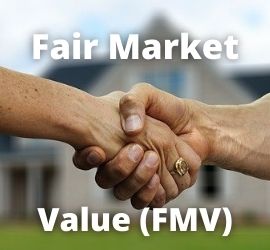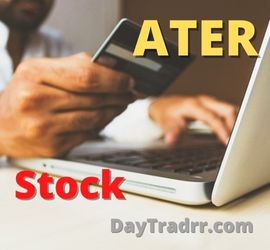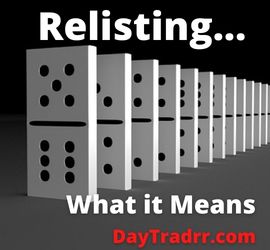What Is a Trading Desk?
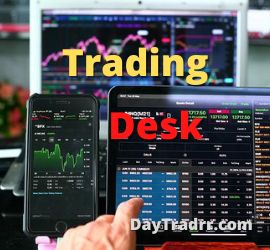 A trading desk is a department or physical area within a brokerage trading firm or investment bank where securities transactions take place. Depending on the type of financial institution, traders may be trading for their own personal accounts. Or, the desks may be occupied by brokers who operate as agents matching buyers and sellers. Any combination of the two categories of traders may staff the trading desk. Most financial institutions have trading desks that facilitate deal executions in multiple markets. For example, equities, fixed income instruments, futures, commodities, and currencies. These facilities and transactions are critical for maintaining market liquidity. Trading desks are sometimes referred to as a trading floor or the trading area.
A trading desk is a department or physical area within a brokerage trading firm or investment bank where securities transactions take place. Depending on the type of financial institution, traders may be trading for their own personal accounts. Or, the desks may be occupied by brokers who operate as agents matching buyers and sellers. Any combination of the two categories of traders may staff the trading desk. Most financial institutions have trading desks that facilitate deal executions in multiple markets. For example, equities, fixed income instruments, futures, commodities, and currencies. These facilities and transactions are critical for maintaining market liquidity. Trading desks are sometimes referred to as a trading floor or the trading area.
The trading desk is simply a desk or department within a bank or other business. But, it is where various securities such as shares, currencies, bonds, and so on are purchased and sold. Trading desks normally charge a percentage of the commission gained from trading activity. Common categories include equity, fixed income, foreign currency, commodities, and FX. In-house, a trading desk provides a source of market evaluation, structuring of financial goods, and the pursuit of opportunities. Moreover, it supports fulfilling agreements between investors and organizations and selective targeting of clients. Trading desk disadvantages include linked party transactions, a lack of flexibility and little if any transparency.
Trading Desk – A Closer Look
Traders in the financial markets typically congregate in an area known as the trading floor or trading room. The trading floor is made up of desks that are spread out across a vast open expanse. Each desk, officially known as a trading desk, specializes in a specific security or market segment. A financial institution’s trading desks are where securities are bought and sold.
Prior to the 1970s, many banks divided their capital market activity into numerous departments spread over several locations. Following the creation of the NASDAQ, investment companies were obliged to maintain stock trading desks. Initially, major institutions began integrating these departments. Today, many asset managers outsource their trading desks to larger organizations.
A heavier regulatory burden on money managers, razor-thin margins and rapid technological developments in trading are driving many to cut costs and hire outside firms to handle their day-to-day trading. It is as much as 40% cheaper for small to medium-sized fund firms to hire an external trading company than employ two traders themselves, according to interviews with executives from more than a dozen asset managers, banks, and brokerages, as well as industry experts. Such outsourced trading desks effectively work as units of “buy-side” investors like asset managers and include all the analysis, administration, and compliance services an in-house team would provide. They are distinct from a bank or brokerage’s regular “sell-side” trading operations which simply execute trades on a client’s behalf. (Source: reuters.com)
How A Trading Desk Works
Trading desks are staffed by professional traders who specialize in one sort of investment. For example, stocks or commodities, or currencies. To find the best rates for their clients, these traders usually use electronic trading systems and market makers. Trading desk employees take orders from the sales desk, which is in charge of recommending trading ideas to institutional and high-net-worth customers. Trading desks further assist clients by developing tailored financial products and monitoring potential opportunities.
A Trading desk makes money by charging a commission on deals they execute. A hedge fund, for example, may deal through an equities trading desk of an investment bank. They pay a small charge for each trade. Brokers may operate their own trading desk in some situations by acting as the counterparty for their clients’ trades. These deals may never reach the interbank market and instead remain within the broker’s own liquidity pool. Depending on the security being traded, there are numerous types of trading desks. These desks are frequently separated and may be located at specific central exchanges.
Trading desks can add value to a company’s portfolio by providing first-hand experience in many areas. For example, transactional cost analysis, selecting counterparties and developing trading strategies. In exchange, the firms receive commissions from their clients’ trading operations. A trading desk does much more than just facilitate securities trading. It advises investors on how to structure financial products, generate supporting documentation and locate trading opportunities.
Types of Trading Desks
Some standard trading desk activities include:
- Equity trading – These trading desks deal with anything from stocks to exotic options.
- Fixed-income securities – A fixed-income trading desk handles government bonds, corporate bonds, and other yield-paying bonds and bond-like products.
- Foreign exchange – ForEx trading desks enable currency pair trading by acting as market makers. They can also participate in proprietary trading.
- Commodities – Agricultural products, metals, and other commodities, such as crude oil, gold, and coffee, are the focus of commodity trading desks.
- Derivatives – These traders are experts in financial derivatives including options, futures, forwards, and swaps.
Each of these sectors can be subdivided further. For example, fixed income is a broad category that includes anything from ultra-safe US Treasury bonds to ultra-risky, low-grade business bonds, sometimes known as junk bonds. Larger investment banks may divide their trading desks into specific categories within these broad areas. Many brokers also provide trading desks for their clients, particularly in the forex and equity day trading markets. These brokers distinguish themselves from other brokers who function as intermediaries by being able to execute trades instantly. Most large financial institutions have their own trading desks to assist internal teams and external clients with order placement.
Up Next: What Is a Purchase Money Mortgage?
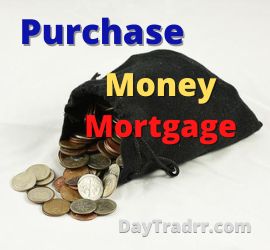 A purchase money mortgage is seller or owner financing granted by the seller of a home to the borrower as part of the purchase transaction. This type of financing is typically used when a buyer cannot qualify for a mortgage through standard banking methods. A purchase money mortgage can be employed when the buyer assumes the seller’s mortgage and the difference between the balance on the assumed mortgage and the property’s sales price is made up of seller financing. A purchase money mortgage might allow purchasers with less-than-perfect credit to purchase a property. This may appear to be a good idea to become a homeowner no matter what. However, there are some drawbacks to this procedure.
A purchase money mortgage is seller or owner financing granted by the seller of a home to the borrower as part of the purchase transaction. This type of financing is typically used when a buyer cannot qualify for a mortgage through standard banking methods. A purchase money mortgage can be employed when the buyer assumes the seller’s mortgage and the difference between the balance on the assumed mortgage and the property’s sales price is made up of seller financing. A purchase money mortgage might allow purchasers with less-than-perfect credit to purchase a property. This may appear to be a good idea to become a homeowner no matter what. However, there are some drawbacks to this procedure.
As part of the purchase agreement, a person purchasing real estate may grant the seller a mortgage on the property. This form of financing replaces some or all of the cash the buyer would have paid the seller otherwise. A buyer could, for example, pay for a $600,000 house with a $400,000 bank mortgage, $100,000 in cash, and a $100,000 purchase money mortgage. The interest rates for purchase money mortgages are greater than those on typical bank mortgages. They are frequently utilized by buyers who do not have enough savings to cover a traditional down payment. Or, buyers who are unable to obtain a large enough bank mortgage due to poor credit.


